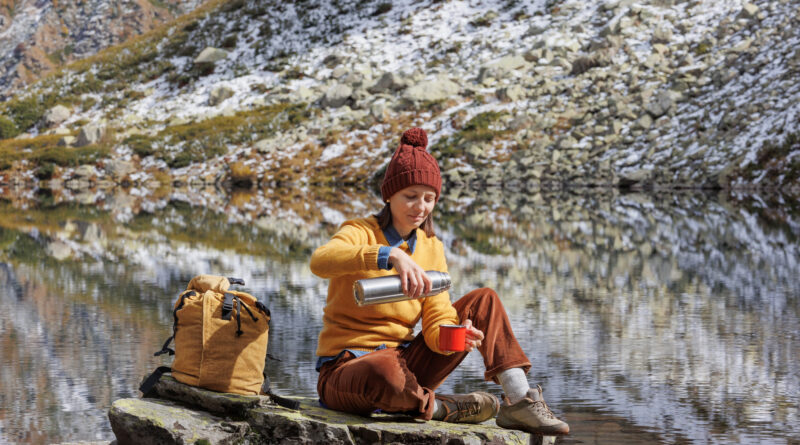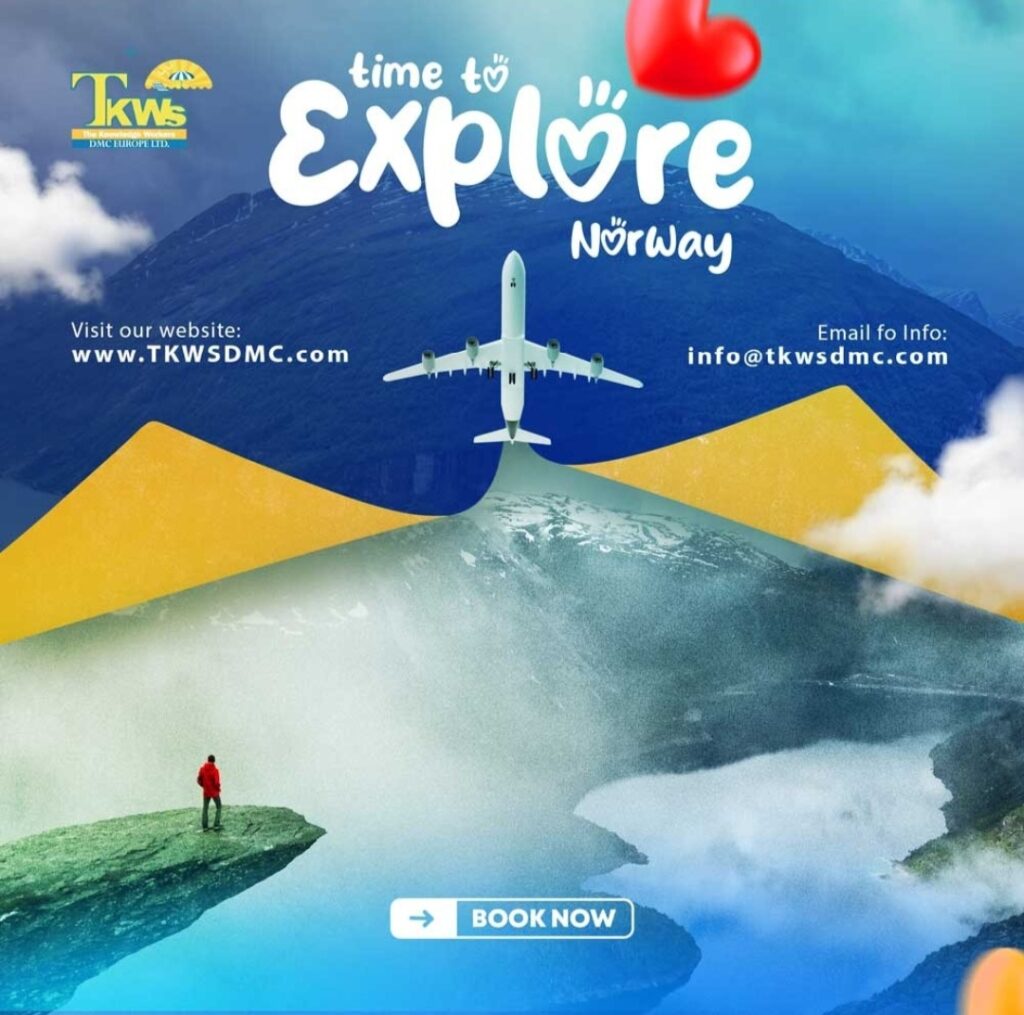Norway Travel Guide: Food, Nature, Adventure and Seasonal Tips for Every Traveler
Norway is a country of extraordinary contrasts—where snow-covered fjords meet the midnight sun, where Viking traditions blend with cutting-edge design, and where wild natural landscapes offer adventure at every turn. Whether you’re a foodie, a nature lover, a thrill-seeker, or a seasonal traveler, Norway offers something for every kind of explorer. In this ultimate guide, we’ll dive into the best of Norwegian cuisine, natural wonders, outdoor adventures, and tips for visiting in every season.
- Norwegian Food: A Taste of the North
Norway’s cuisine is rooted in its rugged environment and seafaring history. Expect fresh seafood, hearty stews, and age-old preservation techniques like curing, smoking, and fermenting.
Top Traditional Dishes to Try
- Rakfisk – Fermented trout, eaten raw with flatbread and sour cream. Strong in flavor, it’s a dish for the adventurous.
- Kjottkaker – Norwegian meatballs served with brown gravy, potatoes, and lingonberry jam.
- Lutefisk – Dried whitefish rehydrated in lye, typically served during the Christmas season.
- Smalahove – A traditional dish of smoked sheep’s head, usually served around Christmastime in the west of Norway.
- Farikal – Lamb and cabbage stew, considered Norway’s national dish.
- Brunost (Brown Cheese) – A caramelized goat cheese with a sweet, slightly tangy flavor; best enjoyed on waffles or crispbread.
Seafood Galore
Thanks to its long coastline, Norway is a seafood paradise. Sample freshly caught:
- Arctic cod (skrei)
- King crab from the Barents Sea
- Salmon sashimi served in high-end Oslo restaurants
- Gravlaks (cured salmon with dill and mustard sauce)
Where to Eat
- Bergen Fish Market – Try fish soup or grab a salmon sandwich.
- Oslo’s Mathallen – A food hall with everything from reindeer burgers to craft beer.
- Local cafes – Many serve traditional baked goods like skillingsboller (cinnamon rolls) and lefse (flatbread with butter and sugar).
- Nature in Norway: Wild Beauty All Around
Norway’s landscapes are among the most dramatic in Europe, offering everything from majestic fjords to Arctic tundra.
Must-See Natural Highlights
- Geirangerfjord & Næroyfjord (UNESCO World Heritage Sites) – Towering cliffs, waterfalls, and mirror-like waters.
- Lofoten Islands – Jagged mountains, colorful fishing villages, and Arctic beaches.
- Trolltunga – A dramatic rock ledge hanging 700 meters above Lake Ringedalsvatnet.
- Preikestolen (Pulpit Rock) – A 604-meter-high cliff with panoramic views of Lysefjord.
- Northern Lights in Tromso – Best seen between October and March.
- Midnight Sun in Nordkapp – From May to July, the sun doesn’t set above the Arctic Circle.
National Parks to Explore
- Jotunheimen – Home to Norway’s highest peaks and endless hiking trails.
- Hardangervidda – Europe’s largest mountain plateau, perfect for reindeer spotting.
- Rondane & Dovrefjell – Great for musk ox safaris and tranquil alpine hikes.
- Adventure Activities: Thrills in Every Season
Norway is built for adventure. No matter the time of year, there are unforgettable experiences waiting.
Summer Adventures (May–September)
- Hiking – Iconic trails include Besseggen Ridge, Romsdalseggen, and Trolltunga.
- Kayaking – Paddle through fjords like Aurlandsfjord or around Lofoten’s coast.
- Cycling – Take on the Rallarvegen or explore quiet country roads in Telemark.
- Wild Camping – Thanks to the “Allemannsretten” (Right to Roam), you can pitch a tent nearly anywhere in nature.
- Fishing & River Rafting – Try your hand at salmon fishing or rafting down the Sjoa River.
Winter Adventures (November–April)
- Dog Sledding – Glide through snowy forests with a husky team in Alta or Tromso.
- Northern Lights Tours – Chase the aurora by snowmobile, reindeer sled, or guided photography tours.
- Skiing – Alpine and cross-country skiing in places like Hemsedal, Trysil, or Lillehammer.
- Snowshoeing & Ice Climbing – Explore frozen waterfalls and icy plateaus.
- Seasonal Travel Tips: When to Go & What to Expect
Norway’s seasons each offer unique experiences. Here’s a breakdown to help you plan your visit:
Spring (April–May)
- What to Expect: Melting snow, blooming flowers, fewer tourists.
- Best For: Waterfall chasing, city breaks in Oslo and Bergen, and early hiking.
- Tips: Pack layers—spring weather can change quickly.
Summer (June–August)
- What to Expect: Long days (24-hour sun above the Arctic Circle), festivals, ideal hiking conditions.
- Best For: Fjord cruises, hiking, road trips, and coastal exploration.
- Tips: Book accommodation early and bring insect repellent—mosquitoes can be fierce inland.
Autumn (September–October)
- What to Expect: Golden foliage, fewer crowds, mushroom and berry picking.
- Best For: Scenic photography, moose spotting, and aurora hunting begins.
- Tips: Many attractions close after summer, so check local schedules.
Winter (November–March)
- What to Expect: Snowy landscapes, aurora displays, winter sports.
- Best For: Skiing, dog sledding, and Northern Lights tours.
- Tips: Dress warmly with wool layers, and be prepared for limited daylight.
- Top Cities & Regions to Explore
Oslo
- Norway’s capital offers museums, architecture, and nightlife.
- Visit the Vigeland Sculpture Park, Munch Museum, and the Oslo Opera House.
- Great food scene from Nordic fine dining to street eats.
Bergen
- Gateway to the fjords with charming wooden houses and vibrant culture.
- Ride the Floibanen Funicular, explore Bryggen Wharf, and take day trips to Hardangerfjord.
Tromso
- Arctic adventures and aurora hunting capital.
- Visit in winter for snow activities or in summer for whale watching and midnight sun.
Alesund
- Art Nouveau town surrounded by fjords and mountains.
- Climb up Aksla Viewpoint for sweeping views.
Lofoten Islands
- Dreamy islands with fishing huts, white-sand beaches, and rugged peaks.
- Ideal for hiking, surfing, and photography.
- Travel Tips & Practical Info
Getting Around
- Trains: Scenic routes like Oslo–Bergen (Bergensbanen) or Dombas–Andalsnes (Raumabanen).
- Car Rentals: Great for remote areas and scenic road trips (Atlantic Road, Trollstigen).
- Ferries: Crucial in fjord regions; check Hurtigruten for coastal voyages.
Public Transport: Reliable in cities with integrated apps like Ruter or Skyss.
Budget Tips
- Grocery Stores: Save money by shopping at Rema 1000, Kiwi, or Coop.
- Accommodation: Consider hostels, cabins, or camping for cheaper options.
- Free Activities: Hiking, swimming in lakes, and enjoying public art or nature are all free!
Cultural Etiquette
- Norwegians value personal space and modesty.
- Punctuality is important.
- Take off your shoes when entering homes.
- Tipping isn’t mandatory, but rounding up or leaving 5–10% is appreciated.
- Family-Friendly Norway
Norway is very family-friendly with clean cities, safe environments, and accessible attractions.
Top Family Experiences
- Fjord Cruises – Smooth, scenic, and fun for all ages.
- Oslo’s Norwegian Museum of Science and Technology
- Kristiansand Dyrepark – A large zoo and amusement park.
- Snow Hotels – Try the Kirkenes Snowhotel or Tromso Ice Domes for a magical experience.
- Norway in Summer vs. Winter: Which to Choose?
Summer Pros
- 20+ hours of daylight
- Easier access to hikes and rural roads
- Outdoor festivals and warm-weather activities
Winter Pros
- Ideal for Northern Lights
- Unique Arctic experiences (dog sledding, snow hotels)
- Fewer tourists in some regions
Final Thoughts
If you can’t decide—do both! Norway transforms beautifully with the seasons, making it a worthy return destination.
From the raw, untamed fjords to its cozy cafes serving fresh cinnamon buns, Norway seduces travelers with its blend of natural grandeur and cultural depth. Whether you’re coming to chase the aurora, summit a cliffside trail, taste ancient Viking recipes, or simply relax in a wooden sauna with a view, Norway welcomes every type of traveler—year-round.So pack your gear, embrace the wild, and let Norway’s landscapes, flavors, and traditions write your next travel story.


